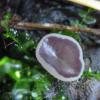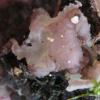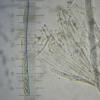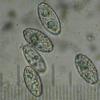
09-01-2026 17:41
Arnold BüschlenHallo, F. dilatata wird von vielen Bryoparasiten

10-01-2026 20:00
Tom SchrierHi all,We found picnidia on Protoparmeliopsis mur

07-01-2026 22:22
 Danny Newman
Danny Newman
Tatraea sp. on indet. hardwood The Swag, Great Sm

10-01-2026 01:18
 Danny Newman
Danny Newman
cf. Neovaginatispora fuckelii on indet. shrub Pre

07-01-2026 10:24
 Danny Newman
Danny Newman
Pezicula sp. on indet. hardwood Appalachian Highl

09-01-2026 10:08
 Blasco Rafael
Blasco Rafael
Hola, en el mismo habitat que la anteriorRetamaDia

08-01-2026 21:22
 Blasco Rafael
Blasco Rafael
Hola, He recogido esta muestra de Orbilia sobre Re

07-01-2026 17:29
 Marc Detollenaere
Marc Detollenaere
Dear Forum,On a barkless Populus I found some smal

10-11-2021 17:33
 Riet van Oosten
Riet van Oosten
Add-on topic http://www.ascofrance.com/forum/7059

07-01-2026 10:05
 Danny Newman
Danny Newman
cf. Chaetospermum on XylariaCosby Campground, Grea
Beauty in trash
Marja Pennanen,
05-07-2012 16:08
I found this beautiful cup 25.6 on a place where people throw their garden waste.
So the soil must be rich.
It was then too young to have spores. I returned there and found a couple allready enjoyed ones... They are about 1 cm wide.,
They had some mature spores, which were somehow warted, about 18-21x8-9.
The paraphyses had a bit swollen tops and were septate and carried some droplets or bubbles. Asci were about 300x15 and IKI blue.
Can this be a Peziza species?
Marja
Martin Bemmann,
05-07-2012 20:33

Re : Beauty in trash
Hi Marja,
can you provide some closeups of the paraphyses tips and stained pictures of the spores?
Regards
Martin
can you provide some closeups of the paraphyses tips and stained pictures of the spores?
Regards
Martin
Peter Welt,
05-07-2012 21:34

Re : Beauty in trash
Hi Marja,
I think that's Peziza michelii .
Peter
I think that's Peziza michelii .
Peter
Nicolas VAN VOOREN,
06-07-2012 08:05

Re : Beauty in trash
I know well Peziza michelii and I can say this is not this species. To help Marja, we need to see spore ornamentation in blue cotton...
Till Lohmeyer,
06-07-2012 18:18
Re : Beauty in trash
Hi, Marja,
could you explain the "trash" a bit more in detail? Did the fungi grow, perhaps, on rotten twigs and/or leaves of Cupressaceae (Thuja, Juniperus etc.). In this case it could well be Peziza epixyla in the sense I described it in Mycologia Bavarica 10, 2008. Our colleague Inge Rößl has just found the species again near Bad Reichenhall in Bavaria, again on remains of Thuja in a heap of "garden trash". She also confirmed the observation that the blue/violet colour of the fresh fungus rapidly disappears, giving way to a dull purplish-grey tint.
The spores in our first collection were a bit longer, but the width fits well.
Best regards
Till
could you explain the "trash" a bit more in detail? Did the fungi grow, perhaps, on rotten twigs and/or leaves of Cupressaceae (Thuja, Juniperus etc.). In this case it could well be Peziza epixyla in the sense I described it in Mycologia Bavarica 10, 2008. Our colleague Inge Rößl has just found the species again near Bad Reichenhall in Bavaria, again on remains of Thuja in a heap of "garden trash". She also confirmed the observation that the blue/violet colour of the fresh fungus rapidly disappears, giving way to a dull purplish-grey tint.
The spores in our first collection were a bit longer, but the width fits well.
Best regards
Till
Marja Pennanen,
07-07-2012 14:45
Re : Beauty in trash
Hi,
I tried to colour the spores, but with no success. Either my equipments (self made CB and old microscope) or my skills are poor. I do not use CB often, because I don't like using poisons.
Anyway I found some longer spores 22-25.
I thought these grew on soil, but there were lots of plant and woody waiste around so it is possible that under the forming soil was some wood - propably Salix, because there were loads of cut branches around.
No Thuja still I suppose, because it is not natural here. Juniperus may be possible.
Peziza epixyla? seems a very, very interesting determination for this...
Marja
I tried to colour the spores, but with no success. Either my equipments (self made CB and old microscope) or my skills are poor. I do not use CB often, because I don't like using poisons.
Anyway I found some longer spores 22-25.
I thought these grew on soil, but there were lots of plant and woody waiste around so it is possible that under the forming soil was some wood - propably Salix, because there were loads of cut branches around.
No Thuja still I suppose, because it is not natural here. Juniperus may be possible.
Peziza epixyla? seems a very, very interesting determination for this...
Marja



